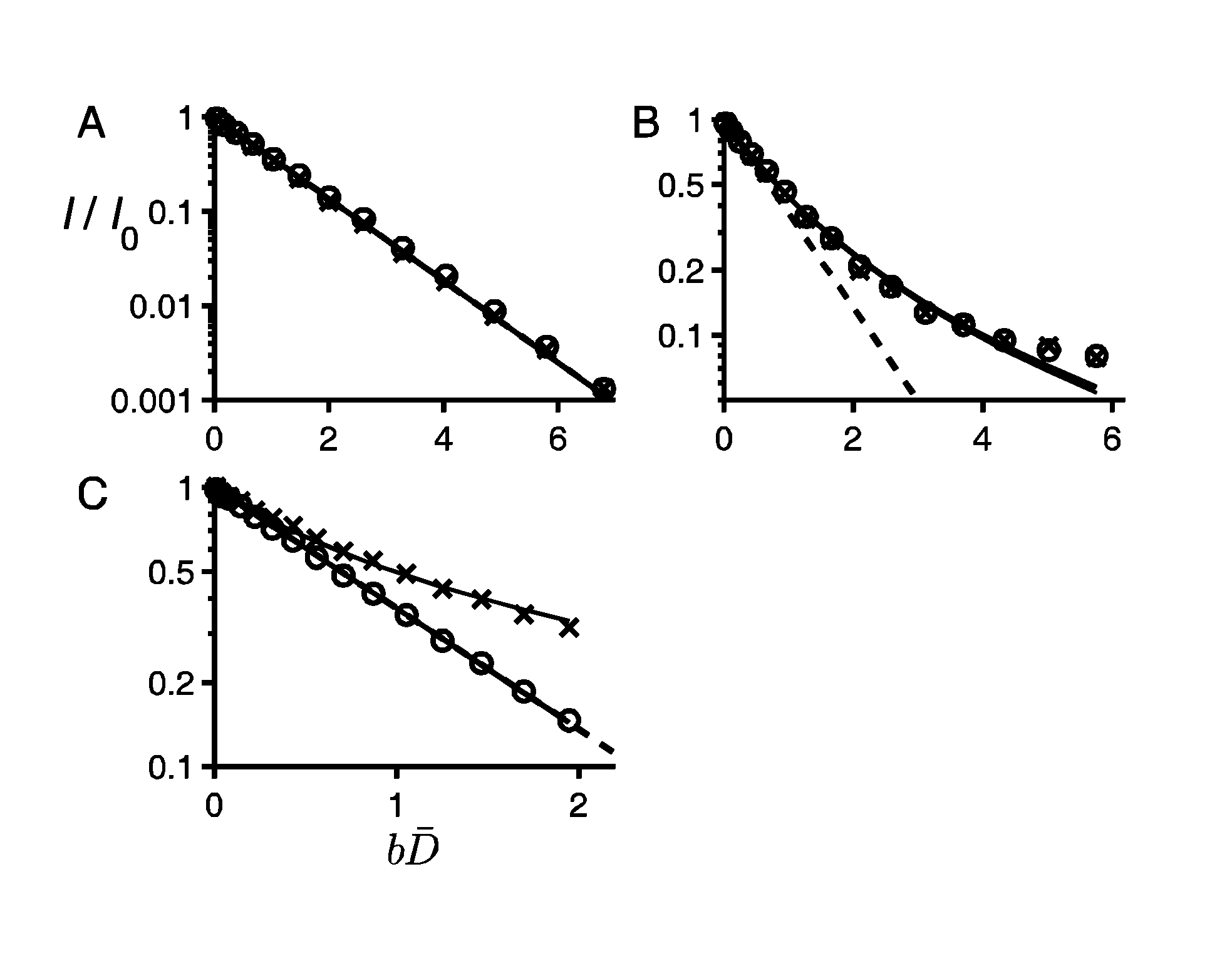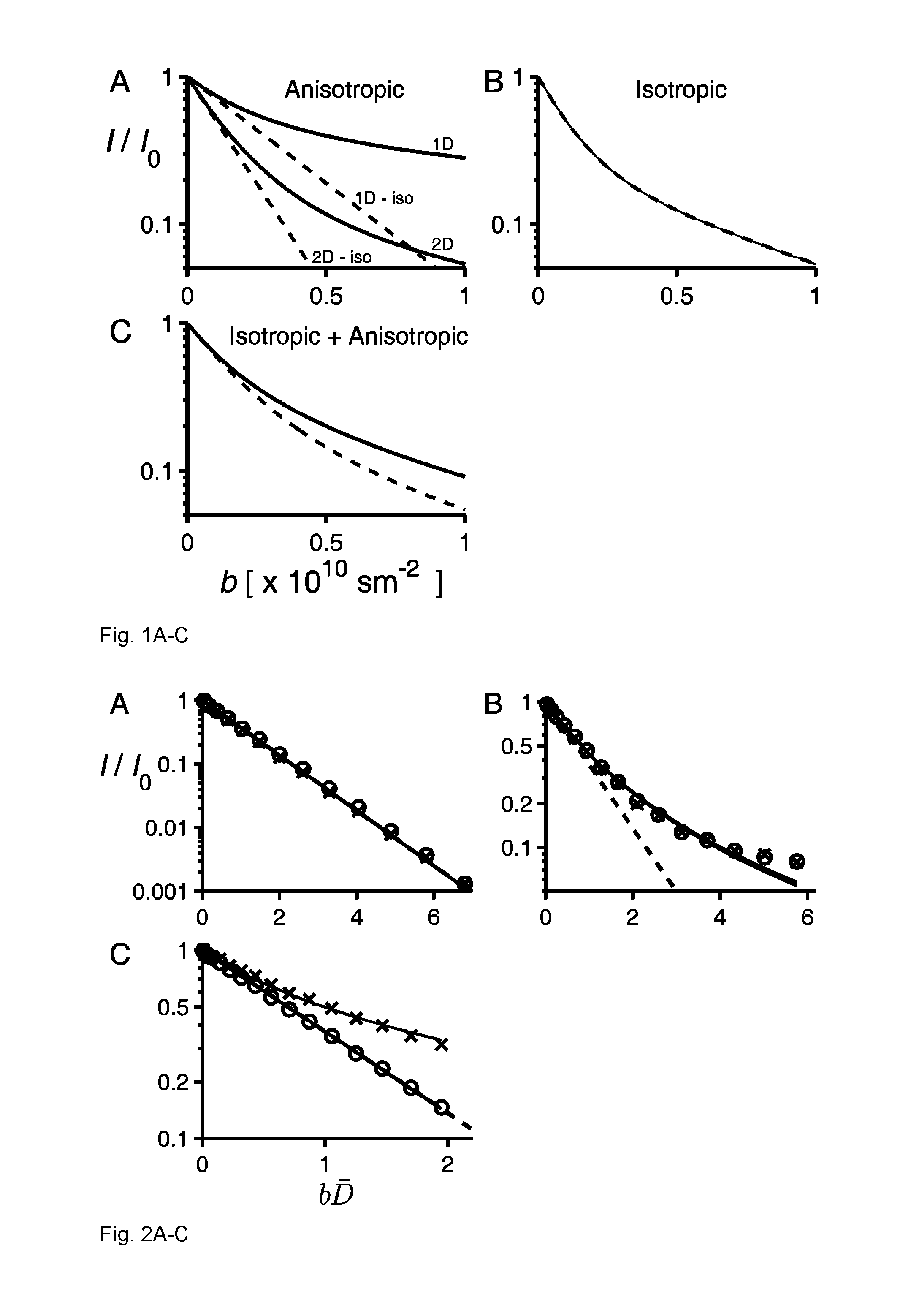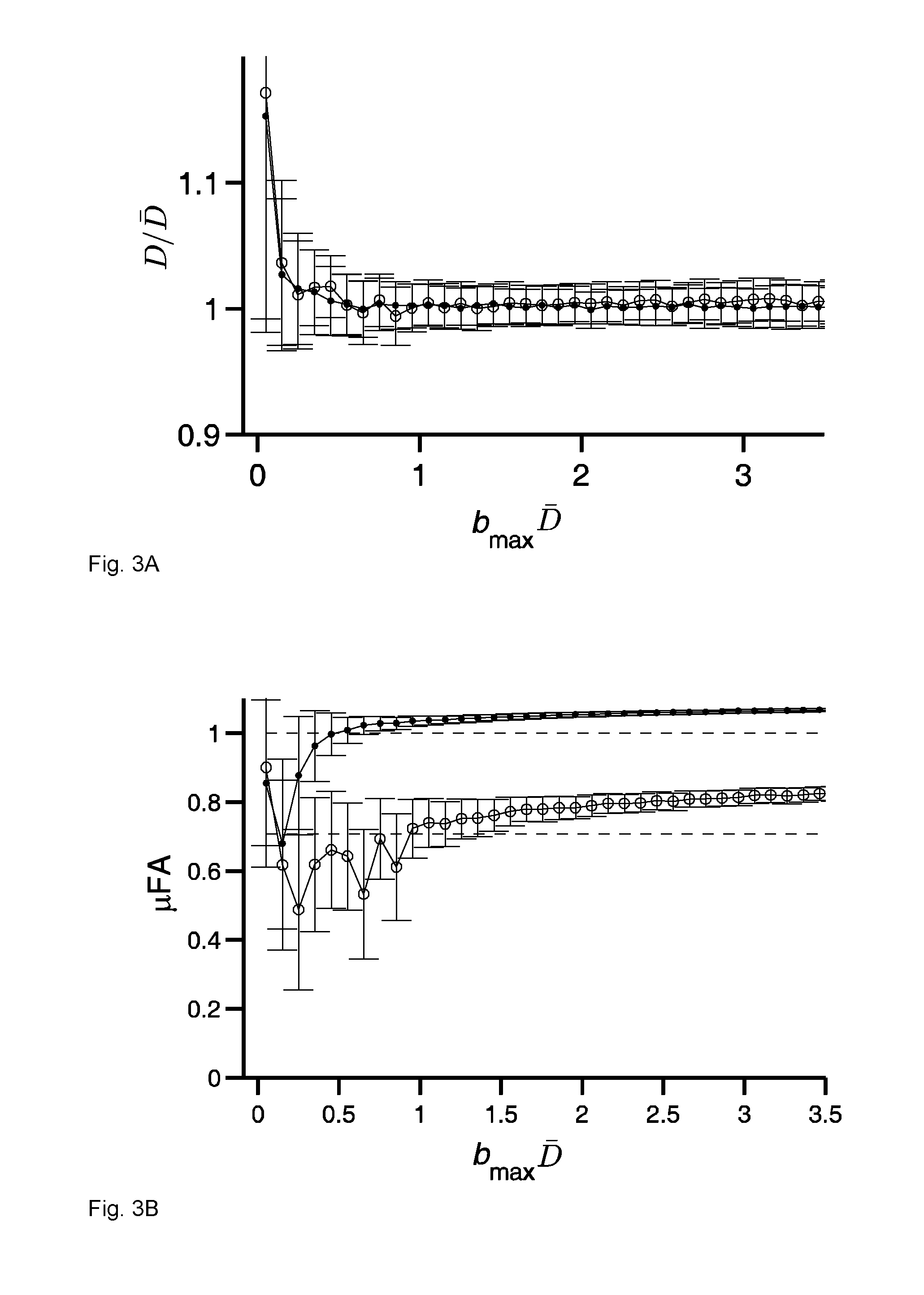Analysis for quantifying microscopic diffusion anisotropy
a microscopic diffusion anisotropy and analysis technology, applied in the field of methods for quantifying microscopic diffusion anisotropy, can solve the problems of high diffusion weighting, low sensitivity to microscopic anisotropy, and inability to achieve the effect of reproducibility
- Summary
- Abstract
- Description
- Claims
- Application Information
AI Technical Summary
Benefits of technology
Problems solved by technology
Method used
Image
Examples
Embodiment Construction
[0042]Below, specific embodiments of the analysis method according to the present invention will be disclosed. According to one specific embodiment, the method involves approximating the distribution of apparent diffusion coefficients by using a Gamma distribution and the signal attenuation by its inverse Laplace transform. This may increase the speed of the fitting procedure discussed below. The distribution of diffusion coefficients may contain isotropic and / or anisotropic contributions, it may arise due to a distribution of Gaussian diffusion contributions or it may be a consequence of a non-Gaussian nature of diffusion, e.g. restricted diffusion, or it may be due to orientation dispersion of anisotropic diffusion contributions (randomly oriented diffusion tensors) or it may be due to a combination of the above.
[0043]One of the main advantages of the analysis method according to the present invention is that it can quantify degree of microscopic anisotropy with high precision fro...
PUM
 Login to View More
Login to View More Abstract
Description
Claims
Application Information
 Login to View More
Login to View More - R&D
- Intellectual Property
- Life Sciences
- Materials
- Tech Scout
- Unparalleled Data Quality
- Higher Quality Content
- 60% Fewer Hallucinations
Browse by: Latest US Patents, China's latest patents, Technical Efficacy Thesaurus, Application Domain, Technology Topic, Popular Technical Reports.
© 2025 PatSnap. All rights reserved.Legal|Privacy policy|Modern Slavery Act Transparency Statement|Sitemap|About US| Contact US: help@patsnap.com



